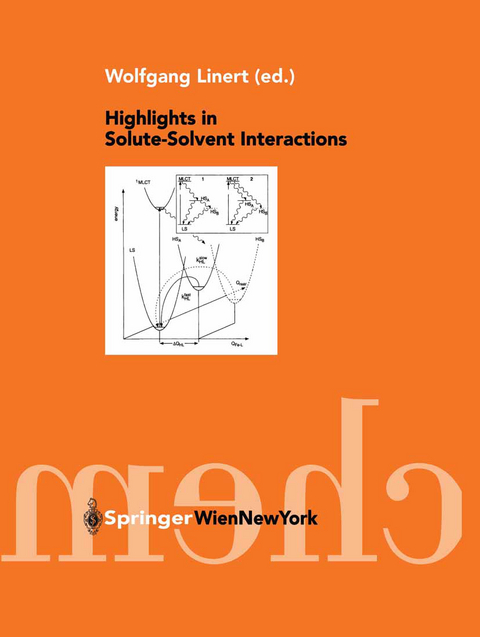
Highlights in Solute-Solvent Interactions
Springer Wien (Verlag)
9783709172810 (ISBN)
Ionic Solvation in Aqueous and Nonaqueous Solutions.- Spin Equilibrium in Solutions.- Thermochromism and Solvatochromism in Solution.- Recent Advances in the Description of the Structure of Water, the Hydrophobic Effect, and the Like-Dissolves-Like Rule.- Thermodynamic Investigation of Phase Equilibria in Metal Carbonate¡ªWater¡ªCarbon Dioxide Systems.- The Solvent-Like Nature of Silica Particles in Organic Solvents.- Prediction of Electrolyte Solubilities from Minimal Thermodynamic Information.- Preferential Solvation in Mixed Solvents X. Completely Miscible Aqueous Co-Solvent Binary Mixtures at 298.15 K.- Phase Transitions and Critical Behaviour of Binary Liquid Mixtures.- Extraction of Unprotected Amino Acids by Mixed-Ligand Nickel(II) and Copper(II) Chelates.- Solvent Effects on Ion-Pair Distribution and Dimerization of Tetraalkylammonium Salts.
| Erscheint lt. Verlag | 9.9.2012 |
|---|---|
| Vorwort | H. Taube |
| Zusatzinfo | IX, 222 p. 11 illus. |
| Verlagsort | Vienna |
| Sprache | englisch |
| Maße | 210 x 279 mm |
| Gewicht | 585 g |
| Themenwelt | Naturwissenschaften ► Chemie ► Analytische Chemie |
| Schlagworte | Inorganic Chemistry • liquid • Organic Chemistry • Physical Chemistry • solution chemistry |
| ISBN-13 | 9783709172810 / 9783709172810 |
| Zustand | Neuware |
| Informationen gemäß Produktsicherheitsverordnung (GPSR) | |
| Haben Sie eine Frage zum Produkt? |
aus dem Bereich


